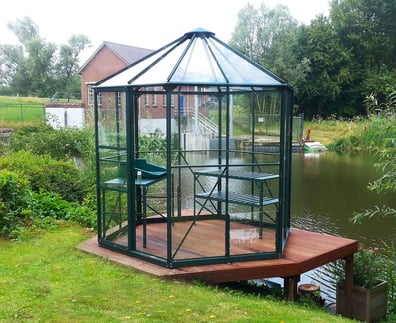Top Benefits of Greenhouses for Home Gardening and Commercial Use
Top Benefits of Greenhouses for Home Gardening and Commercial Use
Blog Article
Greenhouse garden is one of the very satisfying ways to grow flowers year-round, but it takes careful preparing and techniques to ensure success. With controlled situations, you can feed flowers regardless of outdoor temperature, but it will take the best methods to generate a perfect setting as part of your greenhouse.Below are a few necessary methods to simply help your plants thrive throughout the year.

Focus on Temperature Control
Sustaining the best heat is important for greenhousegardening. Crops prosper in different heat stages relying on their form, so it's essential to monitor and adjust conditions accordingly. During colder months, choose reliable greenhouse heater or padding methods to retain warmth. Use automated ports or supporters in summer to prevent overheating, as conditions above 85°F may pressure flowers and stop their growth. Pairing these systems with a straightforward thermometer enables you to keep a steady environment.
Manage Humidity Levels
While greenhouses normally maintain higher moisture degrees, a lot of moisture can inspire mold or mold growth. For a healthy harmony, calculate moisture often using a hygrometer. Aim for approximately 50-70% relative humidity, changing with correct ventilation programs or perhaps a dehumidifier if needed. Additionally, spacing plants appropriately assures better air flow, lowering the chance of fungal diseases.
Choose the Right Plants
Not totally all plants are suitable for greenhouses. To maximize produce and success, select crops that align effectively with the season and your greenhouse conditions. Throughout colder months, develop crops like lettuce, kale, or broccoli, which thrive in a cooler environment. Warm-weather crops like tomatoes, cucumbers, and peppers blossom in the spring or summertime within larger temperatures. Pairing complementary plants also assists produce biodiversity and normally deters pests.

Use Quality Soil and Fertilizers
The caliber of your soil right affects plant growth. Pick a nutrient-rich earth combine specifically made for greenhouse plants. Enrich your planting beds with natural subject like compost to improve fertility. Frequently give your crops with fertilizers matched for their needs—some crops might involve large nitrogen for leafy growth, while others thrive with potassium-rich mixes for fruit development.
Practice Integrated Pest Management
Pests will find their way into also the absolute most managed greenhouses. Add useful bugs like ladybugs to focus on harmful pests such as for example aphids naturally. Check flowers often and eliminate any pests manually if spotted early. Consider normal or substance treatments as a last resource but utilize them sparingly to avoid damaging useful germs and organisms.
For more information you should click on this kind of link www.greenhousestores.co.uk. Report this page